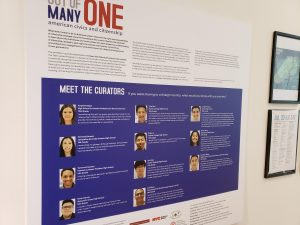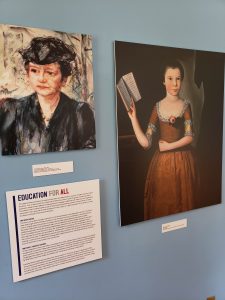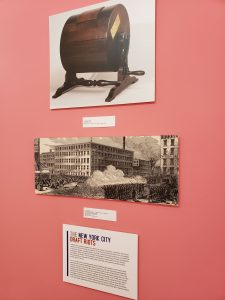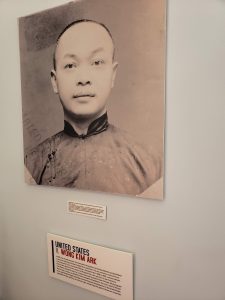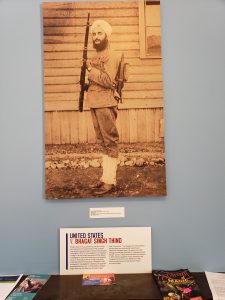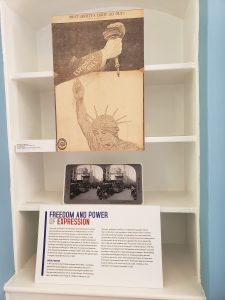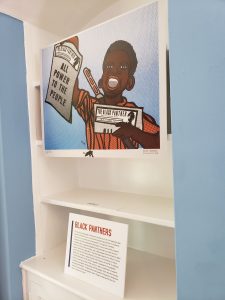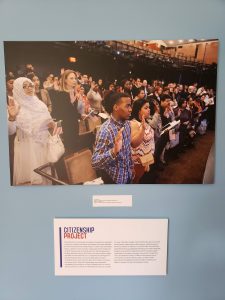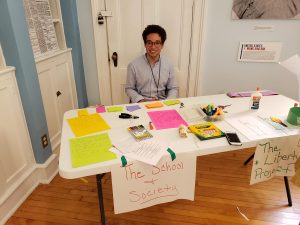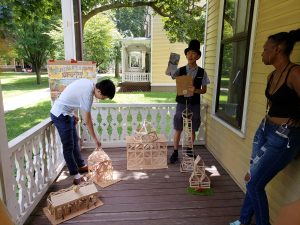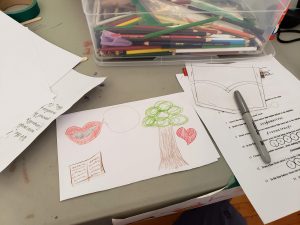Fellow millennial colleagues, get ready: the Color Factory is opening in New York next month. This interactive and immersive exhibition features site-specific palette installations, including a massive bright yellow ball pit that participants can jump into, a room comprised entirely of confetti, and a larger than life size Lite Bright wall. Sound familiar? We have all seen these installations online or on our feeds. When the Color Factory first opened in San Francisco last year, it took the internet by storm, becoming an especially popular platform for colorful Instagram posts.
As an art historian and museum studies student, I’m somewhat uneasy about this latest museum fad: the pop-up museum. These “museums,” such as the Museum of Ice Cream, Candytopia, and 29Rooms strategically provide multi-sensory experiences that are often geared towards a younger audience constituency. However, with their commercial and social media appeal, instant entertainment, competitive ticket availabilities, and expensive entrance fees (with some tickets as high as $38 per person), I have to wonder if this pop culture fad is threatening, or helping, the integrity of art museums. Where museums were once thought of as a place of quiet respite and serious contemplation of the art and information available, many museums are now social gathering hubs for millennials, as a place to go to get that perfect Instagram shot. Are the days of “cultivating a broad public for high art” gone? Can we even compare the pop-up museum with other museum institutions?
Philippe de Montebello, the former director of the Met, has argued that quick turnover rates for such exhibitions, while fantastic for a museum’s finances, is sacrificing connoisseurship and education. This is especially true of hyped-up immersive installations; many people pay for the experience, and not to understand the idea behind the artwork- and that is okay. Pop-up exhibitions and installations are still succeeding in bringing in more visitors, many of whom may not have visited in the first place.
The high prices of these installations themselves are a problem. For instance, when the immersive Rain Room experience was at LACMA in 2015, tickets completely sold out in just days. With its widespread, if slightly pervasive, advertising, and the prevalence of the installation on social media, everyone was trying to get their hands on a ticket. However, upon inquiry with a staff member, I discovered I could receive a coveted ticket by simply “signing up for a museum membership for $110.” This was a proposal I declined, not only for the price, but also for the rather unethical nature of the offer. It didn’t sit right with me that those who were able to afford the membership fee would gain immediate access to this in-demand experience, while others, like students, would either have to wait in standby lines or pass up the experience altogether.
Similarly, the Cleveland Museum of Art is currently showing Yayoi Kusama: Infinity Mirrors, an immersive environment installation like the Rain Room. Although entrance to the Museum’s collections is free, tickets to this experience are expensive, at $30 per person, and almost inaccessible, considering the speed in which they sell out. This is another disheartening example of the threat to the integrity of art museums. It appears that individuals are traveling to the Cleveland Museum of Art in mass numbers to wait in line for hours for this experience, rather than taking the same amount of time to enjoy the Kara Walkers’, Mark Rothkos’, and Paul Cézannes’ all available to view in the adjacent galleries. I hope that visitors to these popular installations also take the time to visit the other collections on site after their three-to-five minute immersive and selfie experience is complete.
Moreover, ‘Instagramable’ exhibitions do not always align with the museum’s mission, and in fact the “museum’s basic mission can be directly contradicted by shoddiness of product,” as Montebello has observed. I contend that LACMA had its financial interests in mind over that of the public when they installed the Rain Room. LACMA’s mission statement is “To serve the public through the collection, conservation, exhibition, and interpretation of significant works of art from a broad range of cultures and historical periods, and through the translation of these collections into meaningful educational, aesthetic, intellectual, and cultural experiences for the widest array of audiences.” I will agree that the Rain Room experience achieved the “aesthetic experience” section of its mission, but what about the “educational, intellectual, and cultural experiences to the widest array of audiences?” Ultimately, it appears that a cultivation of commercial experiences, to the detriment of the inherently scholarly nature of some museums, is the latest threat to an art museum’s integrity.



